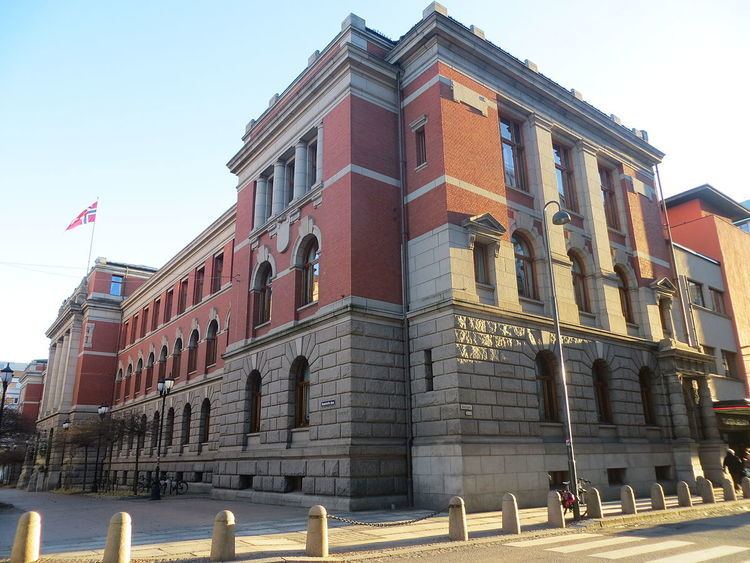 | ||
The judiciary of Norway is hierarchical with the Supreme Court at the apex. The conciliation boards only hear certain types of civil cases. The district courts are deemed to be the first instance of the Courts of Justice. Jury (high) courts are the second instance and the Supreme Court is the third instance.
Contents
Courts
The structure of the courts of justice is hierarchical and hierarchic with the Supreme Court at the apex. The conciliation boards only hear certain types of civil cases. The district courts are deemed to be the first instance of the Courts of Justice. Jury (high) courts are the second instance and the Supreme Court is the third instance.
Supreme Court
The Supreme Court is Norway's highest court of justice and the instance of appeal for verdicts handed down by courts of a lower level. The court is situated in Oslo. The decisions made here are final and cannot be appealed or complained against. The only exception is for cases that can be brought before the Court for Human Rights in Strasbourg.
Interlocutory Appeals Committee
Three of the Supreme Court judges form the Interlocutory Appeals Committee. This committee has to agree that a case is to be brought before the Supreme Court.
Courts of appeal
The country is divided into six appellate districts. Each court of appeal (Norwegian: lagmannsrett) is headed by a senior judge president and each court of appeal has several appellate judges. The courts are:
District courts
The district courts (Norwegian: tingrett) are the first instance of the courts of justice. There are 83 district courts.
Conciliation boards
A conciliation board is allocated to each municipality. Each conciliation board consists of three laymen and an equal number of deputies elected or appointed by the municipality council for terms of four years. Conciliation boards are to mediate between disputing parties and are widely authorised to pronounce a verdict. The majority of civil disputes are resolved by the conciliation boards. Conciliation boards do not hear criminal cases, and participation in their hearings is voluntary.
Special courts
There are special courts that hear or process issues not covered by the District Courts:
Law
The king has the right in the Council of State to pardon criminals after sentence has been passed. This right is seldom used and always by the elected government in the name of the King.
Administration
The Ministry of Justice and Public Security is the government ministry in charge of justice, police and domestic intelligence.
The National Courts Administration is the government agency responsible for the management and operations of the courts. It is purely an administrative organisation, and does not interfere with the judicial processes nor the appointment of judges or other judicial positions in the court system.
Norwegian prisons are humane rather than tough with emphasis on rehabilitation. At 20% Norway's reconviction rate is among the lowest in the world.
Judges
The Judicial Appointments Board nominates judges for appointment, who are officially appointed by the Council of State.
Lay judges
In the district courts of Norway, lay judges sit alongside professional judges in mixed courts in most cases. In most cases, two lay judges sit alongside one professional judge. The court leader may decree that a case have three lay judges sit alongside two professional judges if the workload on that case is high or if there are other compelling reasons. Decisions are made by simple majority.
In the courts of appeal, criminal cases where the maximum penalty is less than six years are tried by a panel consisting of three professional judges and four lay judges.
Lay judges are not considered to be representative of the population. About 75% of lay judges are nominated by the political parties in Norway.
Jurors
In the Court of Appeals (Lagmannsrett), ten jurors determine the issue of guilt where a penalty of six years or more may be imposed. In complicated and lengthy cases, the number of jurors may be increased to eleven or twelve in case a juror is unable complete the trial. If there are more than ten jurors after the closing arguments, the number is reduced to ten by dismissing jurors by lot. The jury verdict is not final, and the three professional judges may set aside both convictions and acquittals for a retrial in a court of appeal. Retrials have three professional judges and four lay judges instead of a jury.
Jurors are selected from the lay judge roster for that court of appeal. The municipalities are responsible for assigning people to the roster.
Juries have been in use since 1887. There have been recent proposals to abolish jury trials in Norway.
